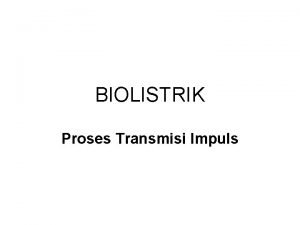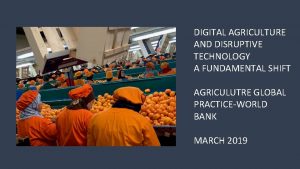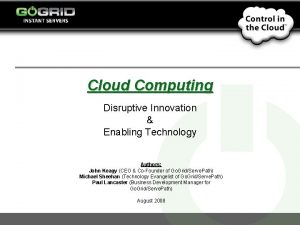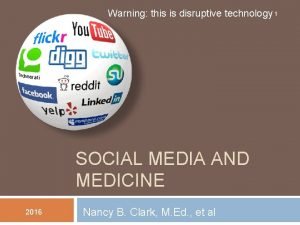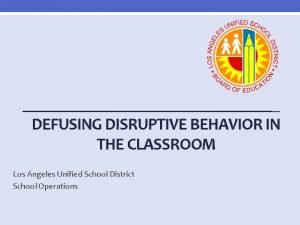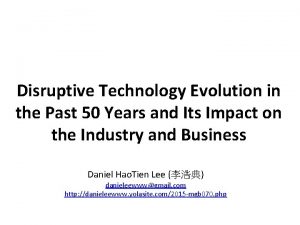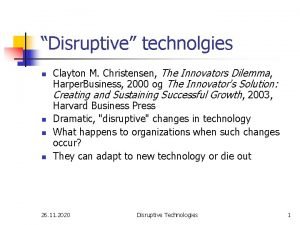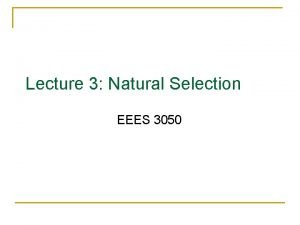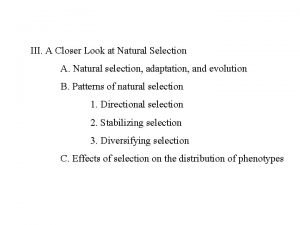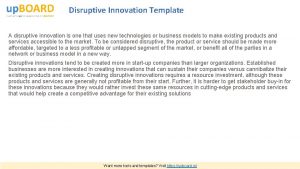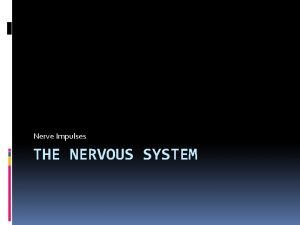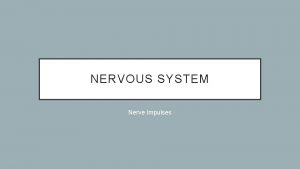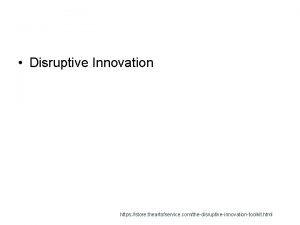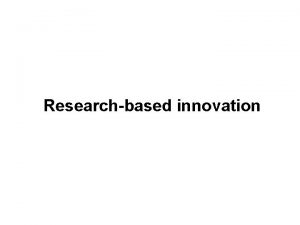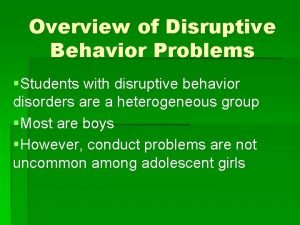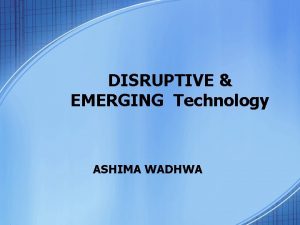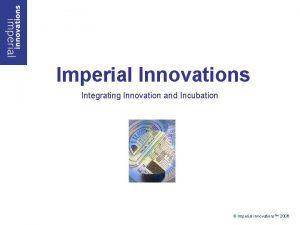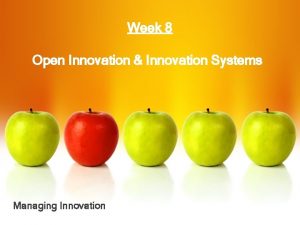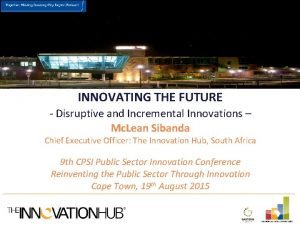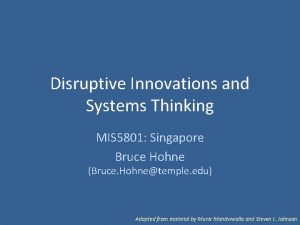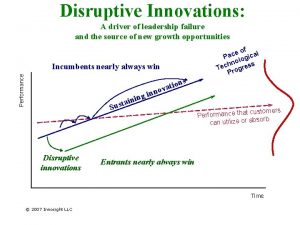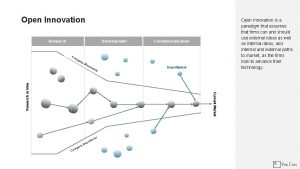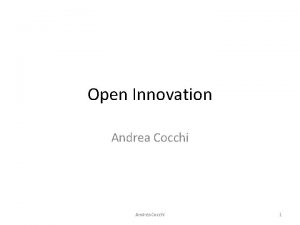Innovations Innovation impulses and impact Disruptive and open
































- Slides: 32

Innovations • • Innovation impulses and impact Disruptive and open innovations

SOURCES OF INNOVATION IMPULSES • Chap. 3 in: SEEKING AND IMPLEMENTATION OF INNOVATION OPPORTUNITIES

Internal environment • Own R&D • Technical divisions – design, technology • Production divisions (production, provision of services) • Marketing and sales • Logistics (purchase and supplies) • Guarantee and post-guarantee service • Owners

External environment • • Customers Suppliers Competitors Consultants, R&D institutions • Schools, universities • Professional publications, Internet • Exhibitions, fairs, specialized seminars and conferences • • Advertising agencies Investors Media Authorized testing laboratories, certification agencies • State institutions, public sector • Legislation • Globalization

MARKET PULL - R&D PUSH • Market pull – looking for the best way of satisfying a newly emerging customer demand – improvement of the existing products, extension of the existing offer or decrease of price – impulses for continuous, incremental innovations or for process innovations • Research and development push – looking for commercial use of new impulses resulting from the R&D results – generating of new markets for conceptually different products

7 SOURCES (Drucker) INTERNAL 1. 2. 3. 4. unexpected event contradiction change of work process change in the structure of industry or market EXTERNAL 5. Demographic changes 6. Changes in the world view 7. New knowledge

1. Unexpected event • Unexpected success 1. What will the use of the offered opportunity mean to us? 2. Where will its introduction take us? 3. What do we need to do for its implementation? 4. How can we achieve that? • • Unexpected failure Unexpected external event

2. Contradiction • Non-compliance with economic reality • Contradiction between reality and anticipations about it • Contradiction between the anticipated and real behavior of customers and their values

3. Change of process • realize the necessity of change, identify the weak point of the chain • be convinced that if something does not work the way it should, then it is necessary to attempt a change • the solution must be convenient for those who will implement it. It must place moderate and feasible requirements

4. Change in the structure of industry and market • Rapid growth of the industry • Identification of new market segments • Convergence of technologies (e. g. use of computers in telecommunications) • Rapid change of the industry and resulting need of a structural change

5. Demography • easiest to describe and to predict • influence what will be bought, who and in which amounts will purchase

6. Change of attitudes • change in the approach to health: healthcare, food, spending the leisure time • “upper-middle class”: a chance to offer nonstandard services at non-standard prices • increasing migration, feminism, regionalism etc • Timing is essential - to be the first

7. New knowledge • Based on convergence or synergy of various kinds of knowledge, their success requires, high rate of risk – Thorough analysis of all factors. identify the “missing elements” of the chain and possibilities of their supplementing or substitution; – Focus on winning the strategic position at the market. the second chance usually does not come; – Entrepreneurial management style. Quality is not what is technically perfect but what adds the product its value for the end user

IMPULSES FROM THE MARKET ENVIRONMENT • Customers product presentation – realistic – simple, demonstrative and precise – moderate – representative sample of customers • Suppliers • Competitors

INNOVATION IMPULSES OF THE R&D • identification research: to monitor the scientific, technical and economic information and identify innovation impulses applicable in the company • basic research • applied research: acquire knowledge and means applicable for the meeting of specific, beforehand-defined goals • development: systemic use of knowledge and means acquired in the applied research for the creation of a new or improvement of the existing product or for the creation or modification of processes

INTERNAL IMPULSES • usually combined with external sources • supported by – creative techniques – innovation tools • REGISTER OF IMPULSES

CATEGORIES OF INNOVATIONS

Sustaining vs. disruptive • Sustaining– better products, can be sold for higher prices to demanding customers; incumbents win • Disruptive – commercialization of simpler, more user-friendly products, which are cheaper and targeted for new or less demanding customers; newcomers win

Key elements of disruptivity • • At each market there is only limited pace of change that can be absorbed by customers There is a typical improvement trajectory at each market; technological progress is usually faster than absorbing capacity. Companies strive for better products to be offered with higher profit to not yet satisfied customers.

Clayton M. Christensen: The Innovator´s Solution, Harvard Business Press, 2003

• Due to technological progress the disruptive innovation after some time intersects the trajectory of needs of demanding customers and starts to compete with incumbents, which are in principle not prepared to react adequately, as they are focused on success at „better“ markets, not to compete at new or „inferior“ markets.

Harvard Business Press, 2003 Clayton M. Christensen: The Innovator´s Solution,

Harvard Business Press, 2003 Clayton M. Christensen: The Innovator´s Solution,

Harvard Business Press, 2003 Clayton M. Christensen: The Innovator´s Solution,

Harvard Business Press, 2003 Clayton M. Christensen: The Innovator´s Solution,

Two types of disruption • New market: competes with „non-consumption“; more accessible, simpler products that can be used by new groups of users (PC, transistor radio, desk copiers). In time they become good enough to attract customers from main markets, first from lower layers. Incumbents do not realize threat, often they are glad to get rid of those customers, as they can focus on higher segments of their markets. • Disruption from below: focuses on lower layers of main markets (minimills, discount hypermarkets, Korean carmakers); motivates incumbents to leave the market.






 Incoming sensory impulses and outgoing motor impulses
Incoming sensory impulses and outgoing motor impulses Incremental innovation vs disruptive innovation
Incremental innovation vs disruptive innovation 영국 beis
영국 beis Dynamic strategy and disruptive innovation
Dynamic strategy and disruptive innovation Social impulses foster infant language
Social impulses foster infant language Social impulses foster infant language
Social impulses foster infant language Transmission of electrical impulses
Transmission of electrical impulses Transmits nerve impulses
Transmits nerve impulses Transmits nerve impulses
Transmits nerve impulses Mysite.socccd
Mysite.socccd Stabilizing selection human birth weight
Stabilizing selection human birth weight Dmdd disorder
Dmdd disorder What is artificial selection
What is artificial selection Distributive justice
Distributive justice Dmdd diagnosis
Dmdd diagnosis Disruptive behavior disorder nos
Disruptive behavior disorder nos Disruptive technology in agriculture
Disruptive technology in agriculture Cloud computing disruptive technology
Cloud computing disruptive technology Disruptive coloration
Disruptive coloration Social media disruptive technology
Social media disruptive technology Deborah brandy lausd
Deborah brandy lausd Disruptive
Disruptive Critical disruptive voltage
Critical disruptive voltage Disruptive technology in the past
Disruptive technology in the past Disruptive critical voltage formula
Disruptive critical voltage formula New disruptive technologies 2021
New disruptive technologies 2021 Limiting modifiers
Limiting modifiers New disruptive technologies
New disruptive technologies Disruptive behavior in meetings
Disruptive behavior in meetings Shift disruptive learning
Shift disruptive learning Disruptive selection
Disruptive selection Disruptive selection
Disruptive selection Disruptive selection
Disruptive selection






